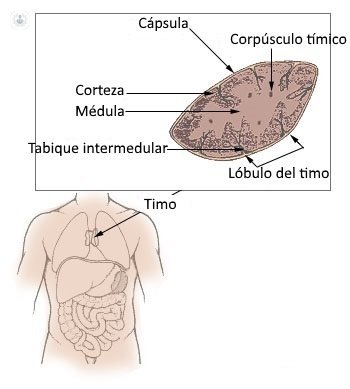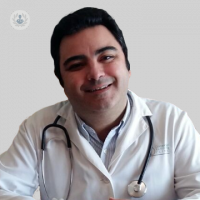Timo importance in infections and hematopoietic transplantation
Written by:The thymus is a gland shaped organ of the immune system consisting of T lymphocytes, which are cells responsible for cell - mediated immunity in response to activation of some cells to fight infections. The response of the immune system is very important in Hematology in transplant rejection hematopoietic progenitors.

The scam: what is and what is
The thymus is an organ of the immune system, shaped gland. It was known in ancient Greece by the origin of the word Thymos, which means "heart and soul", possibly because of its location in the chest, "near where they feel subjectively, desires and emotions."Galen was the first to realize that the size of this organ size changed throughout life. Initially it was considered a "lymphocyte graveyard" without functional value. However, its importance in the immune system was discovered in 1961 by Jacques Miller, to be removed by surgery thymus of a mouse 3 days old and observe deficiency subsequently suffered its number of lymphocytes, which were later called T cells synonymous name "Timo derived".
How is the thymus gland
The thymus is a two-lobed organ located in the upper chest cavity, partially within the neck region. It is located above the heart pericardium, facing the aorta, between the lungs, thyroid gland below the sternum and behind. The thymus has a thin cover called capsule. It consists of three types of cells:- Epithelial cells. They are compact cells that give form and structure.- Lymphocyte. They are immune cells that protect against infections and stimulate the immune response.- Cells Kulchitsky. They are cells that release hormones.The lobes are formed by many smaller divisions called lobules. A lobe consists of an inner area called the medulla, and a peripheral region called the cortex:- Region Crust: contains immature T cells so that these cells have not yet immune ability to distinguish the body's own cells from foreign cells.- Region bone: contains mature T lymphocytes. These cells have the ability to identify the characteristics of the foreign cells, T cells differentiate into specialized. T cells originate from hematopoietic stem cells from bone marrow and migrate to the thymus unripe through the bloodstream.
Thymus function
The main function of the thymus is mature T lymphocytes. Once mature, they leave the thymus and transported via the blood to the lymph nodes and spleen.Notably, T cells are the cells of your immune system cellular immunity, consisting of an immune response that causes the activation of certain immune cells to fight infection. His cell membrane contains a number of proteins able to recognize different types of allergens (substances that cause an immune response). Lis T cells differentiate into 3 types, in the thymus:- Cytotoxic T cells. Directly bind to antigens and eliminate the pathogen.- Helper T cells. Precipitated antibody production by B cells and also produce substances that activate other T cells- Regulatory T cells. Also they called suppressor T cell response because they suppress B cells and other T cells to antigens.
The thymus produces a series of proteins with hormone function that help differentiate and mature T lymphocytes. Some of these hormones such as thymulin called Tymopoetin and induce differentiation of T lymphocytes, improving immune function. In fact, it increases the immune response Timusina.
Moreover, thymus gland as hormone also stimulates other glands. An example is the hypothalamic-pituitary axis, which stimulates the release of growth hormone, luteinizing hormone, prolactin and gonadotropin, and adrenal gland, stimulating the production of ACTH.
Immunological importance in Hematology
The immune system response is vital in Hematology for rejection of transplants of hematopoietic progenitors, and engraftment, acute or hyperacute rejection, and disease "Graft versus host".
Hematopoietic transplants involve the infusion of hematopoietic progenitors from peripheral previous mobilization and conditioning them to get an adequate amount to ensure the success of blood therapy. Such transplants are used to replenish the bone marrow (factory where all blood components originate) when it depletes by aggressive radiation treatments or chemotherapy as the only curative treatment option in tumor malignant blood diseases such as leukemia, lymphoma, myeloma or aplasias congenital spinal cord.
Edited by Patricia Crespo Pujante


